Abstract
Seven-week-old and 16-week-old A/Jax mice were injected with viable spleen cells or homogenates of spleen cells obtained from older syngeneic mice which either had autoimmune anti-deoxyribonucleoprotein (DNP) antibody in their sera or lacked this activity. None of the 7-week-old recipients developed detectable anti-DNP antibody. However, most of the animals in the 16-week-old group developed this autoantibody. The viability of the cells and the presence of or absence of anti-DNP antibody in the donor's sera did not appear to influence the autoimmune response of these recipients. When viable thymus cells which were obtained from young A/Jax mice were transferred to groups of older syngeneic animals that had developed anti-DNP antibody spontaneously, the anti-DNP decreased or disappeared from the sera of most recipients. Untreated controls did not show this variation. When 36-week-old A/Jax mice which lacked anti-DNP antibody were injected with thymus or spleen cells obtained from young donors, none of the recipients or untreated controls developed anti-DNP antibody. After specific immunization with DNP, however, the control animals began to produce autoimmune anti-DNP antibody while the animals treated with thymus or spleen cells remained unresponsive. These observations support the hypothesis that in A/Jax mice: (1) autoimmunity to DNP may result from failure of normal homeostasis mechanisms which allow proliferation of autoimmune cells; (2) the number of cells with autoimmune potential may increase during ageing; (3) the efficiency of the homeostasis system may decrease during ageing as the result of microbial or genetic factors; and (4) cells which participate in homeostasis are found in the thymus and spleen of young mice and may be the thymus dependent lymphocytes.
Full text
PDF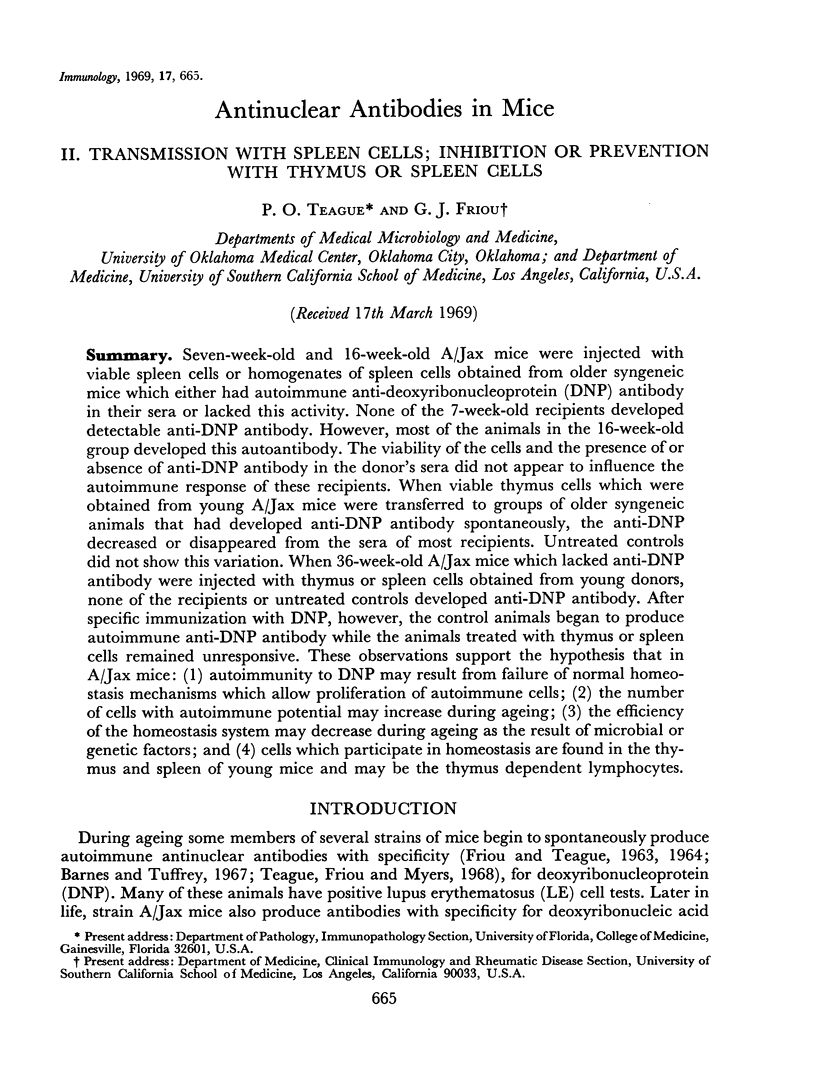
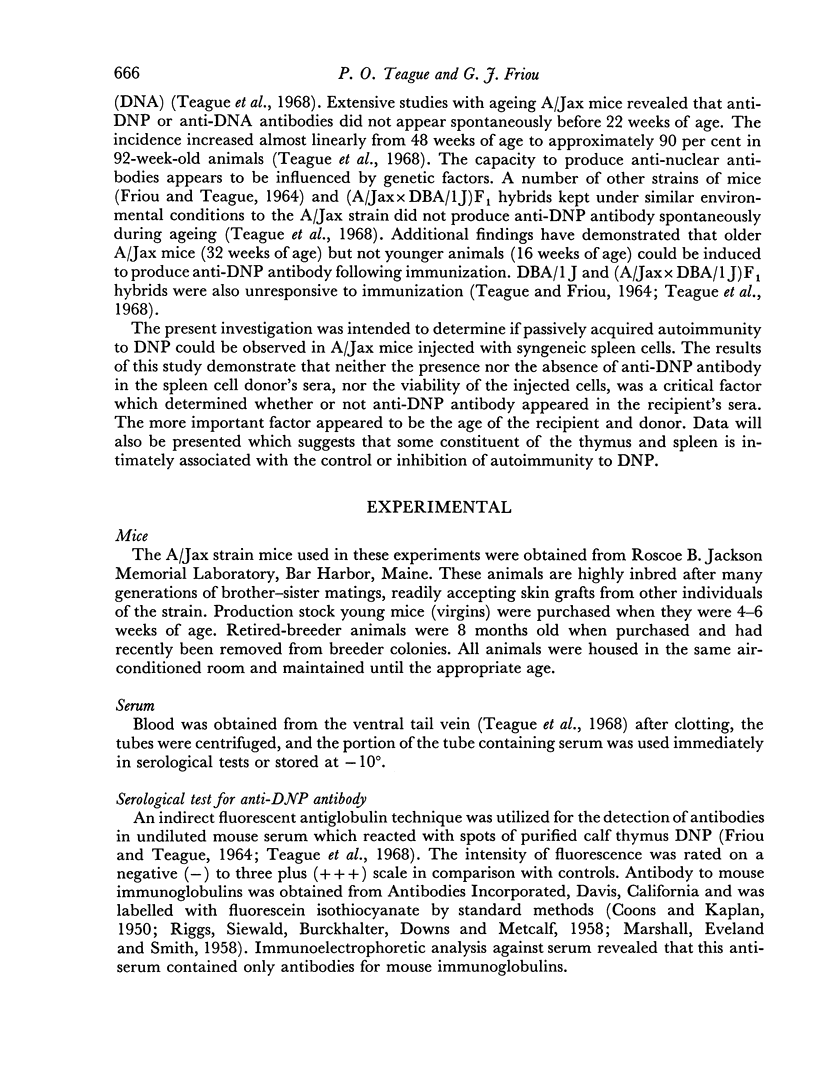
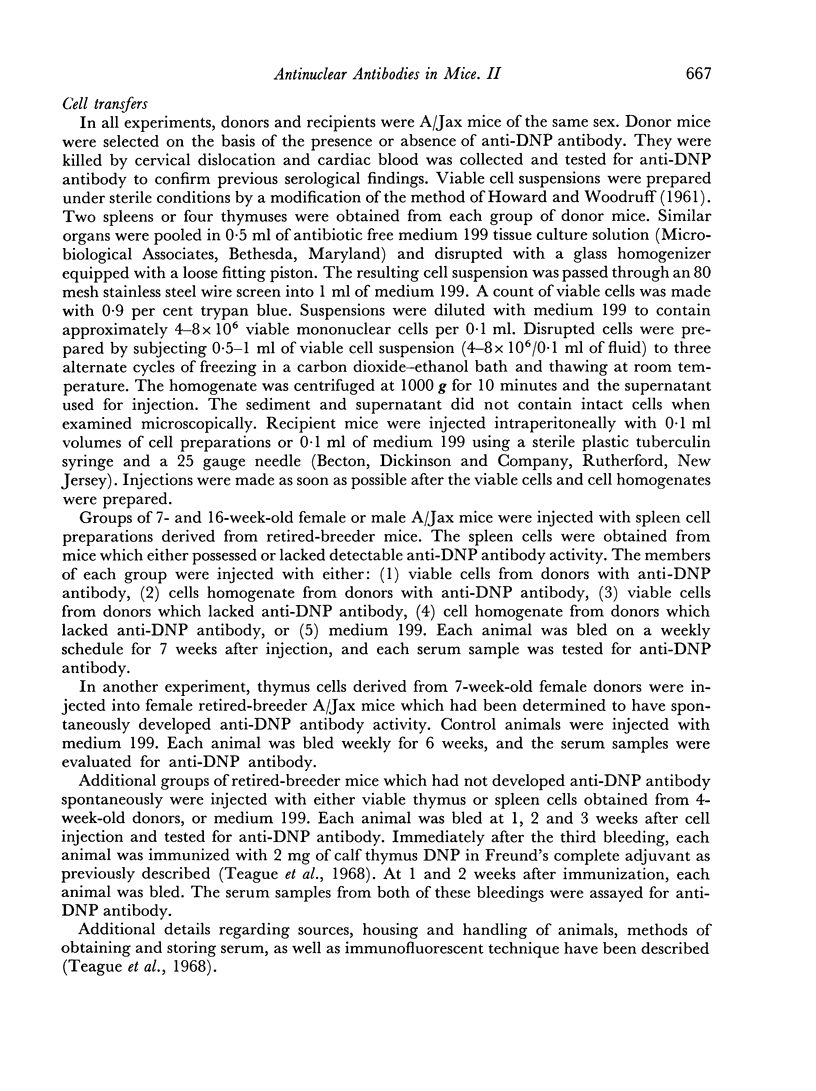
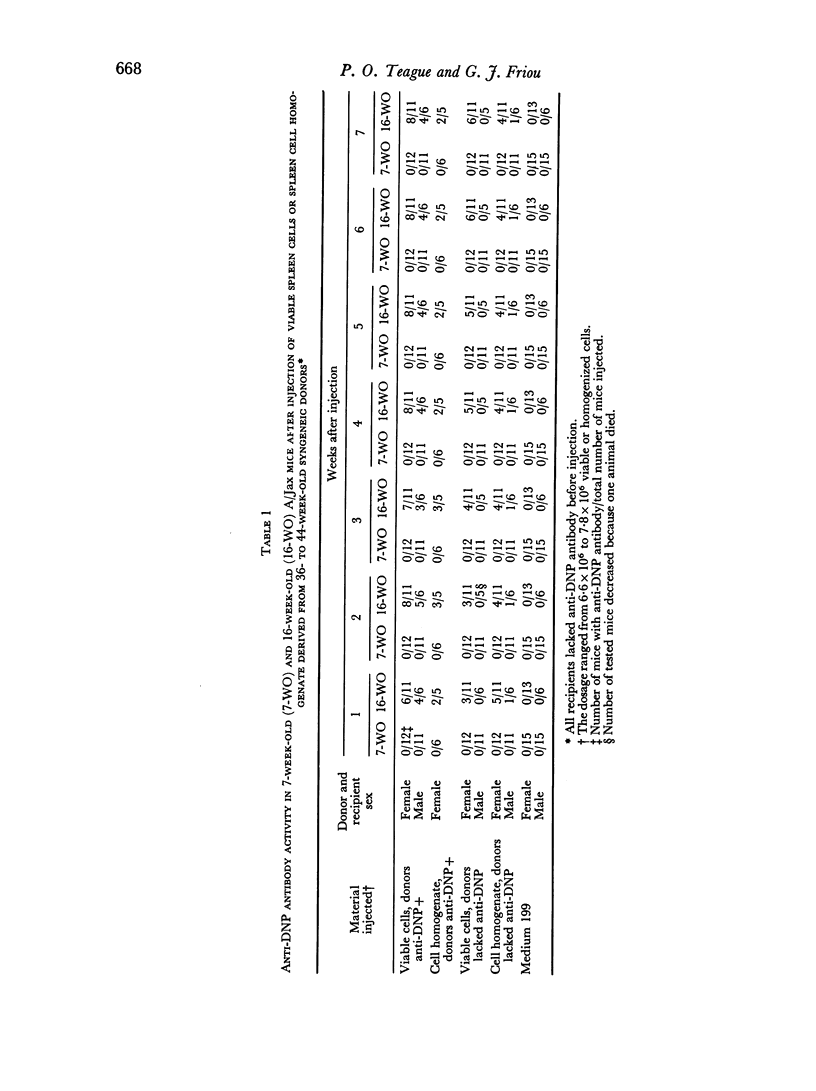
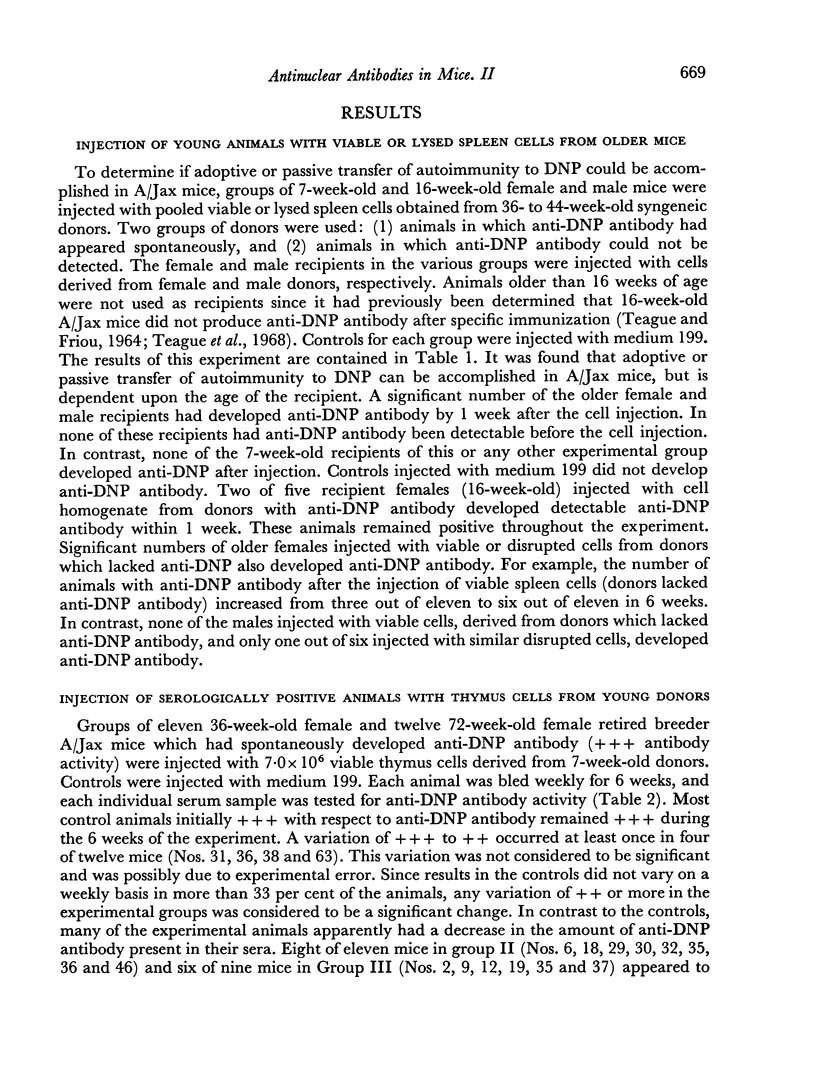
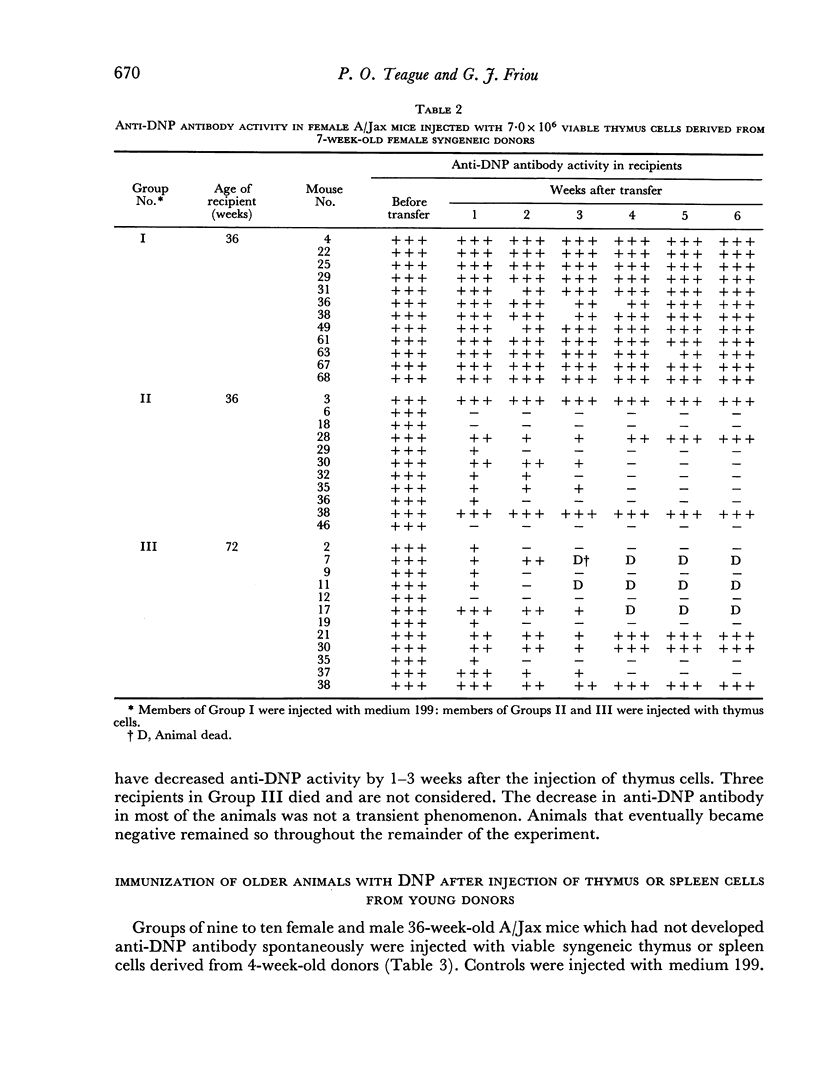
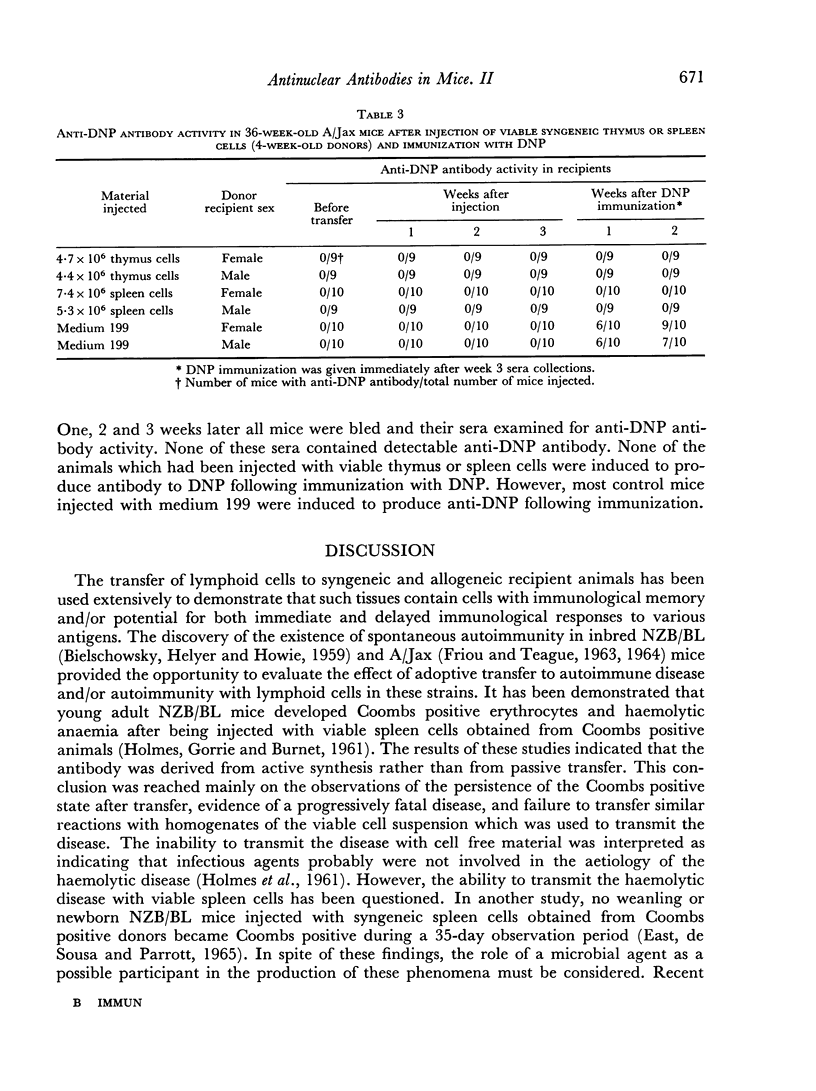
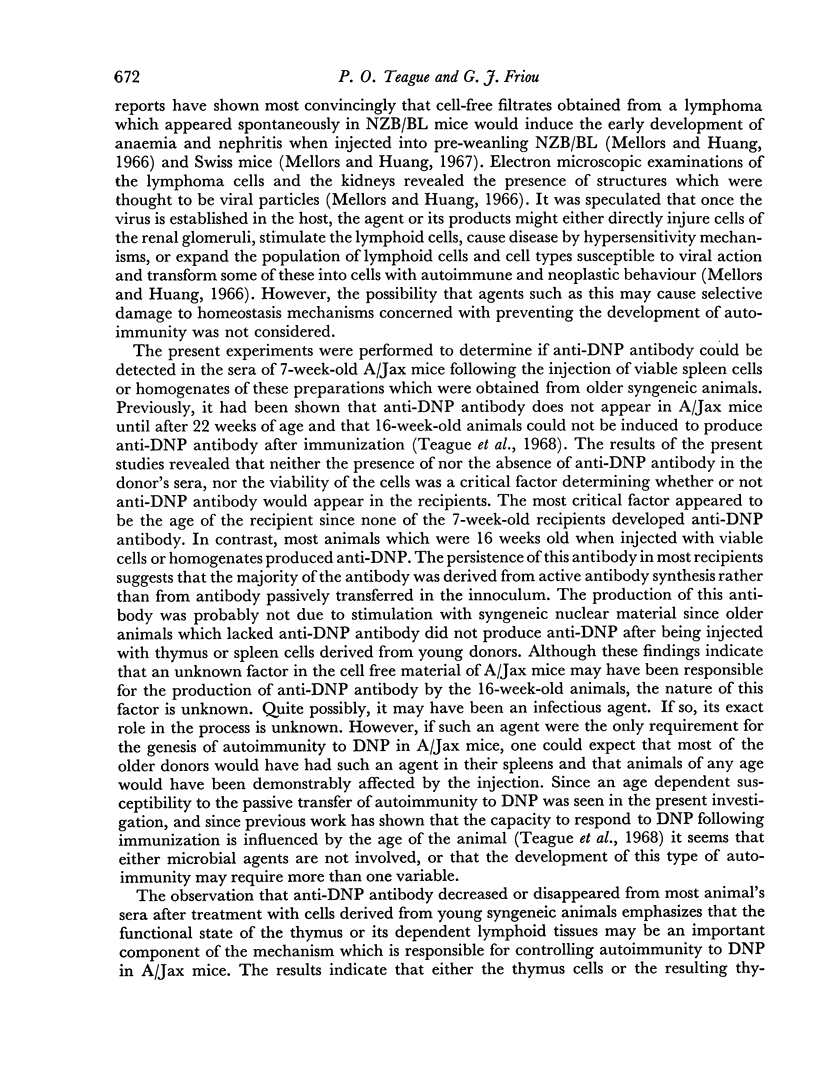
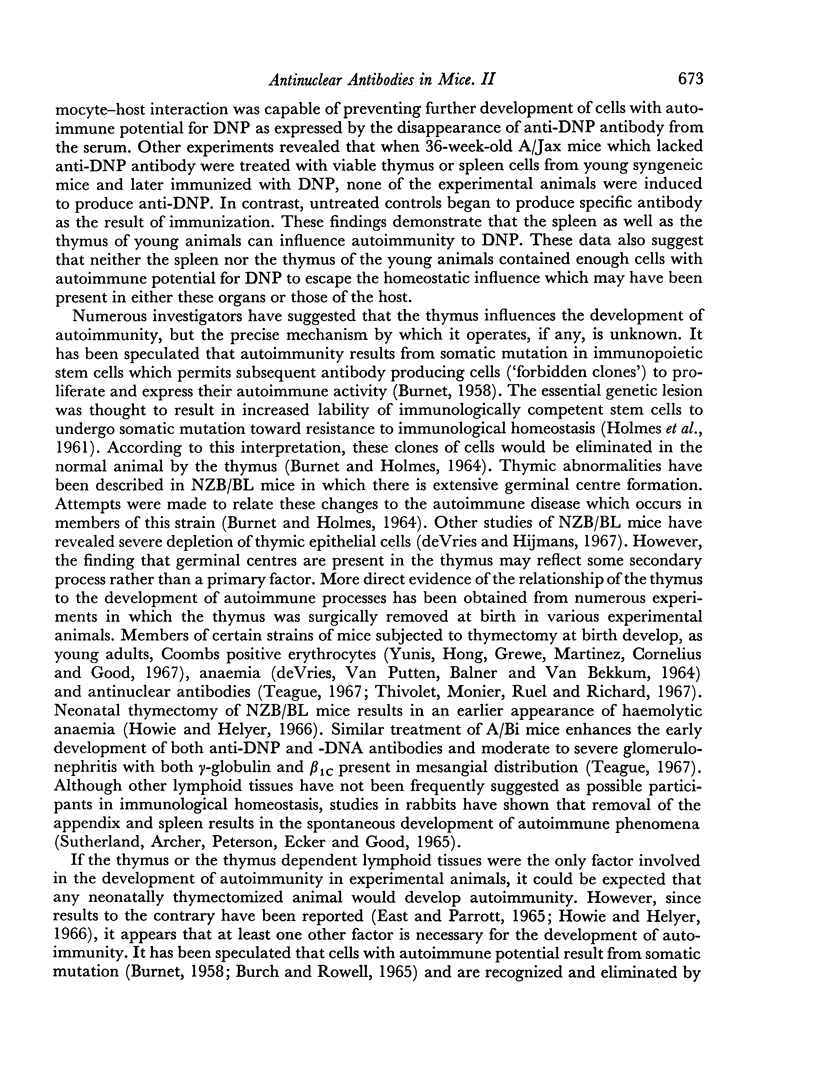
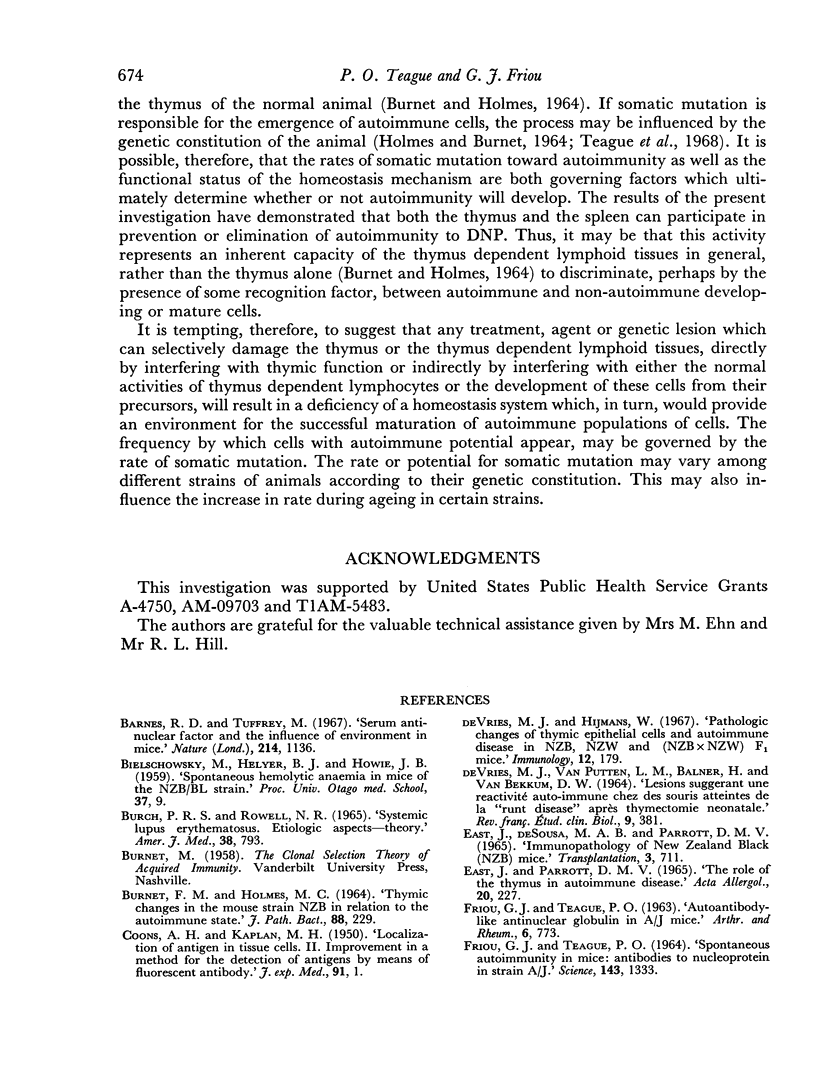
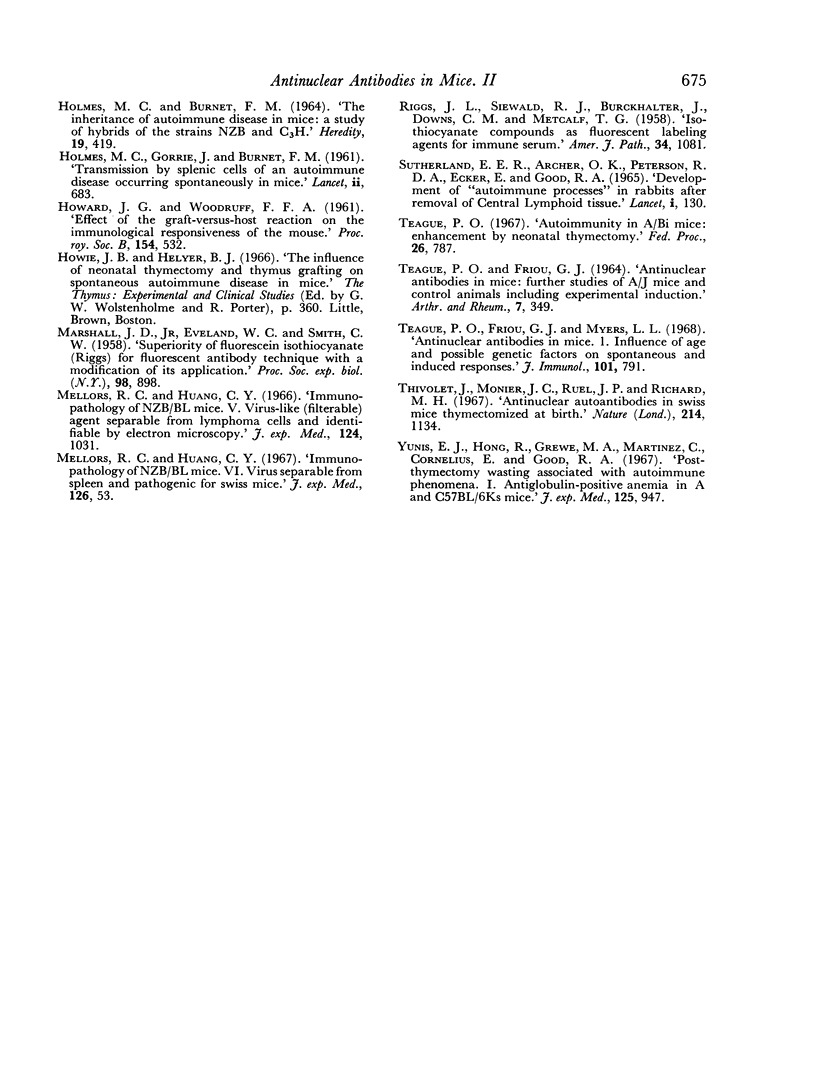
Selected References
These references are in PubMed. This may not be the complete list of references from this article.
- BURCH P. R., ROWELL N. R. SYSTEMIC LUPUS ERYTHEMATOSUS: ETIOLOGICAL ASPECTS. Am J Med. 1965 May;38:793–801. doi: 10.1016/0002-9343(65)90199-3. [DOI] [PubMed] [Google Scholar]
- BURNET F. M., HOLMES M. C. THYMIC CHANGES IN THE MOUSE STRAIN NZB IN RELATION TO THE AUTO-IMMUNE STATE. J Pathol Bacteriol. 1964 Jul;88:229–241. doi: 10.1002/path.1700880129. [DOI] [PubMed] [Google Scholar]
- Barnes R. D., Tuffrey M. Serum antinuclear factor and the influence of environment in mice. Nature. 1967 Jun 10;214(5093):1136–1138. doi: 10.1038/2141136a0. [DOI] [PubMed] [Google Scholar]
- COONS A. H., KAPLAN M. H. Localization of antigen in tissue cells; improvements in a method for the detection of antigen by means of fluorescent antibody. J Exp Med. 1950 Jan 1;91(1):1–13. doi: 10.1084/jem.91.1.1. [DOI] [PMC free article] [PubMed] [Google Scholar]
- EAST J., PARROTT D. M. THE ROLE OF THE THYMUS IN AUTOIMMUNE DISEASE. Acta Allergol. 1965;20:227–234. doi: 10.1111/j.1398-9995.1965.tb03044.x. [DOI] [PubMed] [Google Scholar]
- East J., de Sousa M. A., Parrott D. M. Immunopathology of New Zealand black (NZB) mice. Transplantation. 1965 Nov;3(6):711–729. doi: 10.1097/00007890-196511000-00003. [DOI] [PubMed] [Google Scholar]
- FRIOU G. J., TEAGUE P. O. SPONTANEOUS AUTOIMMUNITY IN MICE: ANTIBODIES TO NUCLEOPROTEIN IN STRAIN A-J. Science. 1964 Mar 20;143(3612):1333–1334. [PubMed] [Google Scholar]
- HOLMES M. C., BURNET F. M. THE INHERITANCE OF AUTOIMMUNE DISEASE IN MICE: A STUDY OF HYBRIDS OF THE STRAINS NZB AND C3H. Heredity (Edinb) 1964 Aug;19:419–434. doi: 10.1038/hdy.1964.52. [DOI] [PubMed] [Google Scholar]
- MARSHALL J. D., EVELAND W. C., SMITH C. W. Superiority of fluorescein isothiocyanate (Riggs) for fluorescent-antibody technic with a modification of its application. Proc Soc Exp Biol Med. 1958 Aug-Sep;98(4):898–900. doi: 10.3181/00379727-98-24222. [DOI] [PubMed] [Google Scholar]
- Mellors R. C., Huang C. Y. Immunopathology of NZB/BL mice. V. Viruslike (filtrable) agent separable from lymphoma cells and identifiable by electron microscopy. J Exp Med. 1966 Dec 1;124(6):1031–1038. doi: 10.1084/jem.124.6.1031. [DOI] [PMC free article] [PubMed] [Google Scholar]
- Mellors R. C., Huang C. Y. Immunopathology of NZB/BL mice. VI. Virus separable from spleen and pathogenic for Swiss mice. J Exp Med. 1967 Jul 1;126(1):53–62. doi: 10.1084/jem.126.1.53. [DOI] [PMC free article] [PubMed] [Google Scholar]
- RIGGS J. L., SEIWALD R. J., BURCKHALTER J. H., DOWNS C. M., METCALF T. G. Isothiocyanate compounds as fluorescent labeling agents for immune serum. Am J Pathol. 1958 Nov-Dec;34(6):1081–1097. [PMC free article] [PubMed] [Google Scholar]
- Sutherland D. E., Archer O. K., Peterson R. D., Eckert E., Good R. A. Development of "autoimmune processes" in rabbits after neonatal removal of central lymphoid tissue. Lancet. 1965 Jan 16;1(7377):130–133. doi: 10.1016/s0140-6736(65)91091-3. [DOI] [PubMed] [Google Scholar]
- Teague P. O., Friou G. J., Myers L. L. Anti-nuclear antibodies in mice. I. Influence of age and possible genetic factors on spontaneous and induced responses. J Immunol. 1968 Oct;101(4):791–798. [PubMed] [Google Scholar]
- Thivolet J., Monier J. C., Ruel J. P., Richard M. H. Antinuclear autoantibodies in Swiss mice thymectomized at birth. Nature. 1967 Jun 10;214(5093):1134–1136. doi: 10.1038/2141134a0. [DOI] [PubMed] [Google Scholar]
- Yunis E. J., Hong R., Grewe M. A., Martinez C., Cornelius E., Good R. A. Postthymectomy wasting associated with autoimmune phenomena. I. Antiglobulin-positive anemia in A and C57BL-6 Ks mice. J Exp Med. 1967 May 1;125(5):947–966. doi: 10.1084/jem.125.5.947. [DOI] [PMC free article] [PubMed] [Google Scholar]
- de Vries M. J., Hijmans W. Pathological changes of thymic epithelial cells and autoimmune disease in NZB, NZW and (NZB x NZW)F1 mice. Immunology. 1967 Feb;12(2):179–196. [PMC free article] [PubMed] [Google Scholar]


